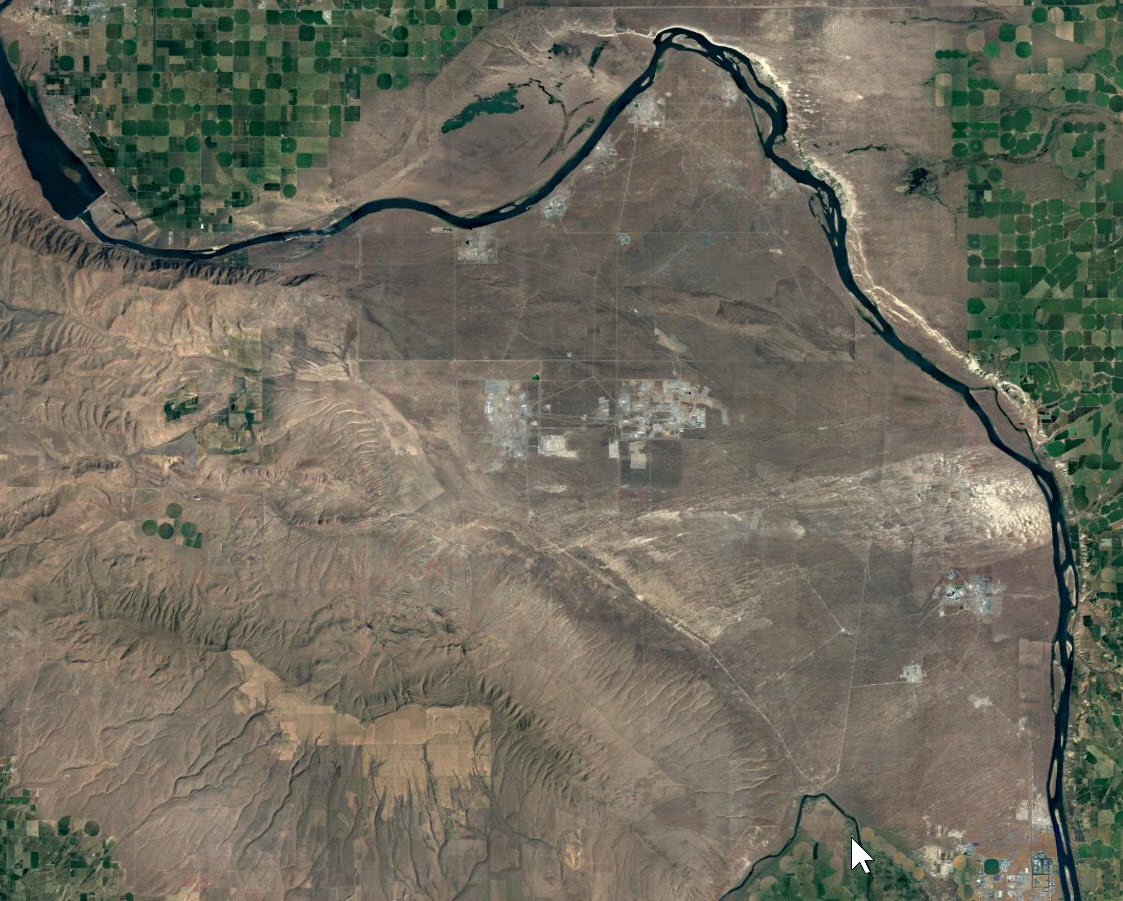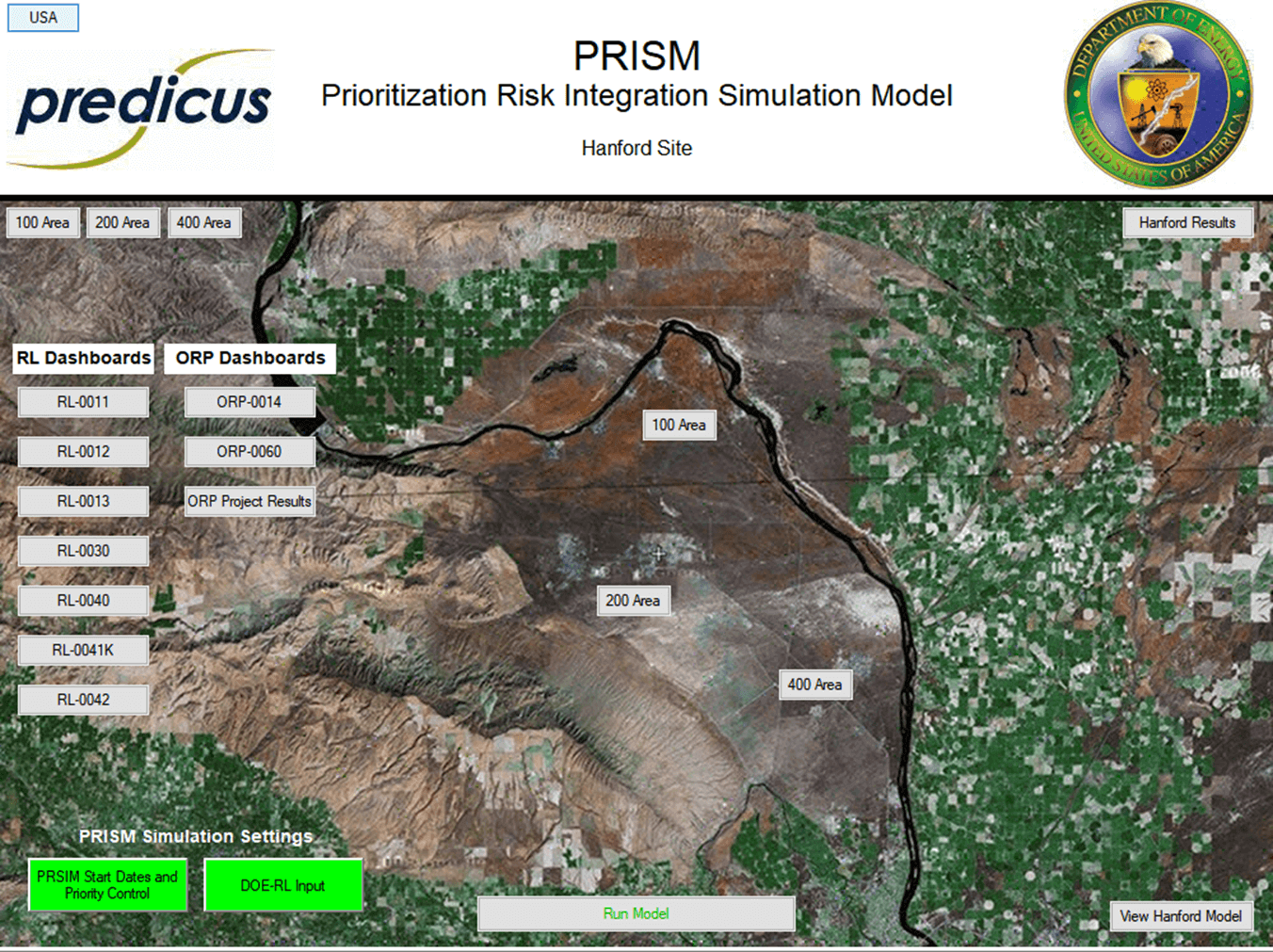Project Planning for Environmental Remediation and Waste Management

PRISM (Prioritization Risk Integration Simulation Model) was developed by Predicus LLC to support the Department of Energy’s Office of Environmental Management (DOE-EM) in its mission to clean up the environmental legacy from the nation’s nuclear weapons materials production complex. PRISM provides a comprehensive, fully integrated planning tool that can tie together DOE-EM’s projects. It is designed to help DOE managers develop sound, risk-informed business practices and defend program decisions. It provides a better ability to understand and manage programmatic risks (image courtesy of Google Earth, Landsat/Copernicus).
The underlying concept for PRISM is that DOE-EM “owns” a portfolio of environmental legacy obligations (ELOs), and that its mission is to transform the ELOs from their current conditions to acceptable conditions, in the most effective way possible. There are many types of ELOs - - contaminated soils and groundwater plumes, disused facilities awaiting D&D, and various types of wastes waiting for processing or disposal. For a given suite of planned activities, PRISM probabilistically simulates the outcomes as they play out over time, allowing for all key identified uncertainties and risk factors.
Each contaminated building, land area and waste stream is tracked from cradle to grave, and all of the linkages affecting different waste streams are captured. The progression of the activities is fully dynamic, reflecting DOE-EM’s prioritization approaches, precedence requirements, available funding, and the consequences of risks and uncertainties.

